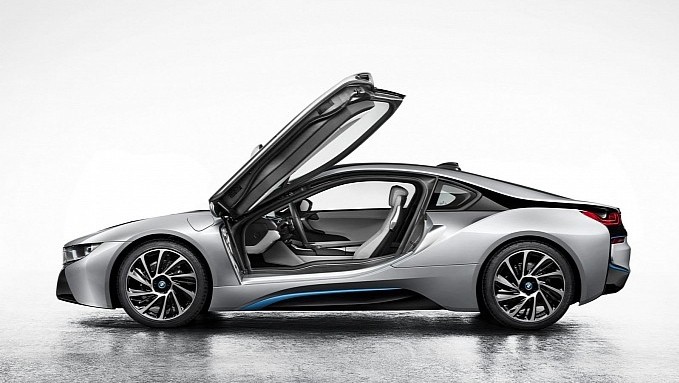Just when BMW was launching the i8 properly back in 2014, the company released a couple of videos that were meant to edify potential customers on how the hybrid sports car comes to fruition. In case you missed them, the guys from How It's Made took a tour of the plant where it all happens and filmed a 20 minute video of the whole process.
The BMW i8 is part of the i sub-brand so it has to abide to its philosophy that requires cars to be both eco-friendly and built as efficiently as possible. In this regard, there are a couple of things you should know about the manufacturing process of the i3 and i8 before even talking about assembly.
The two have two major parts that come together when assembled. There's the Life Module and the Drive module. The names are pretty self-explanatory. The former takes care of you and your life and is made up of Carbon Fiber Reinforced Polymer that is basically a variation of traditional carbon fiber that is cheaper to make. The Drive module is made of aluminum and other lightweight metals and holds the drivetrain and batteries.
Getting back to CFRP, since it is a material that requires a lot of energy to make, BMW decided to make its own powerplant at the site where it is made and together with its American partner SGL they used the lakes nearby (the plant is located near Moses Lake in WA) to generate the clean energy they needed.
The carbon fiber cockpits are sent from the US to Germany where they are assembled on the i8 chassis, a process that is explained in the 20 minute video below. However, even this plant is in turn as eco-friendly as possible, using renewable energy and even being built to offer natural ventilation that would, in turn, deem vents useless, thus saving even more electricity.
In the end, we get a car with 362 HP and 570 Nm (420 lb-ft) of torque that looks to die for, returns 121 mpg (2.1 l/100 km) and can even go in full EV mode while also reaching 100 km/h (62 mph) in just 4.4 seconds.As impressive as these numbers seem, they pale when you look at how it's made.. Enjoy!
The two have two major parts that come together when assembled. There's the Life Module and the Drive module. The names are pretty self-explanatory. The former takes care of you and your life and is made up of Carbon Fiber Reinforced Polymer that is basically a variation of traditional carbon fiber that is cheaper to make. The Drive module is made of aluminum and other lightweight metals and holds the drivetrain and batteries.
Getting back to CFRP, since it is a material that requires a lot of energy to make, BMW decided to make its own powerplant at the site where it is made and together with its American partner SGL they used the lakes nearby (the plant is located near Moses Lake in WA) to generate the clean energy they needed.
The carbon fiber cockpits are sent from the US to Germany where they are assembled on the i8 chassis, a process that is explained in the 20 minute video below. However, even this plant is in turn as eco-friendly as possible, using renewable energy and even being built to offer natural ventilation that would, in turn, deem vents useless, thus saving even more electricity.
In the end, we get a car with 362 HP and 570 Nm (420 lb-ft) of torque that looks to die for, returns 121 mpg (2.1 l/100 km) and can even go in full EV mode while also reaching 100 km/h (62 mph) in just 4.4 seconds.As impressive as these numbers seem, they pale when you look at how it's made.. Enjoy!

